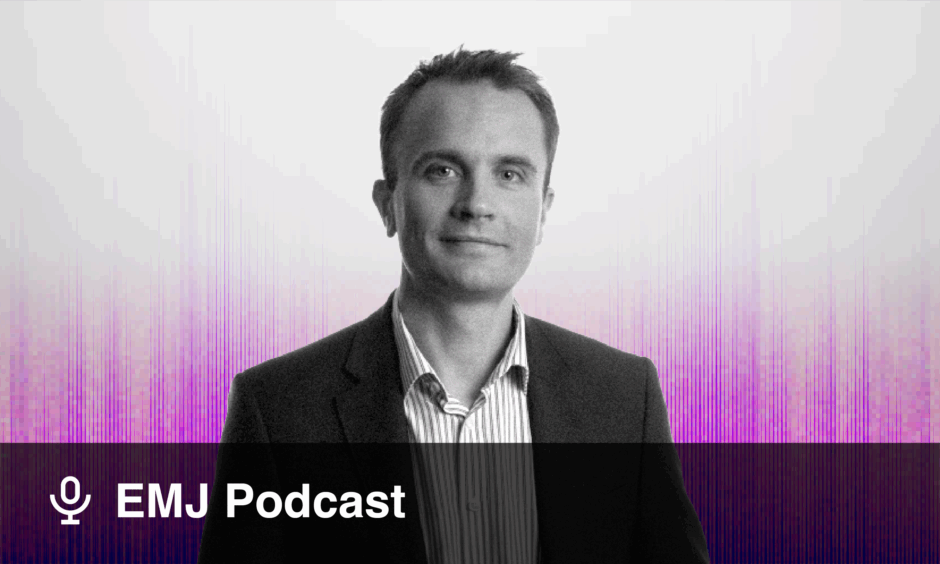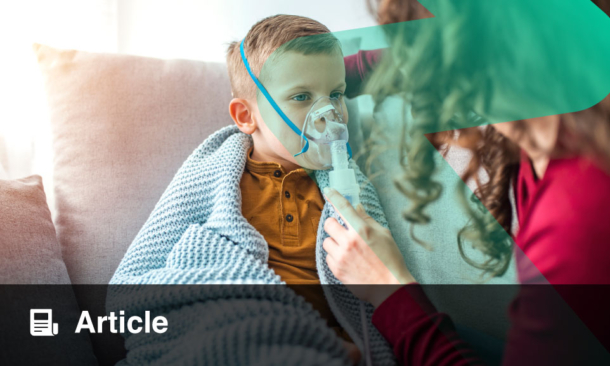FROM 27th September–1st October 2025, Amsterdam, the Netherlands, welcomed over 22,000 respiratory professionals to the European Respiratory Society (ERS) Congress. Set against the city’s historic canals and vibrant streets, the Congress became a dynamic forum for sharing knowledge, fostering collaborations, and exploring the latest advances in respiratory medicine. Under the theme ‘Respiratory Health Around the Globe’, ERS 2025 highlighted the Society’s commitment to addressing respiratory disease on a truly international scale.
The Congress showcased the latest developments across all areas of respiratory medicine, from lung cancer, COPD, and asthma to interstitial lung disease, sleep-disordered breathing, and airway diseases. Delegates explored innovations in early detection, screening programmes, and personalised treatments, alongside emerging therapies aimed at improving outcomes for patients worldwide. Prevention, holistic self-management, and smoking cessation remained central themes, while sessions addressing global disparities, environmental risk factors, and air pollution reinforced the need for collaboration and equitable care across regions.
Sleep and airway medicine was a major focus of the programme, with discussions on disease variability, sex differences, and the impact of environmental and lifestyle factors. Delegates also learned about the latest research on microbiome-targeted therapies in COPD, trajectories of lung function, and potential asthma remission. Highlighted sessions provided insights into the challenges and opportunities in sleep-disordered breathing, supporting more personalised and precise approaches to patient care.
Sustainability was front and centre throughout the Congress. Attendees were encouraged to explore ways to reduce their environmental footprint, from encouraging greener travel to adopting eco-friendly hospital practices. A special session on sustainable healthcare initiatives in the Netherlands illustrated how collaboration and innovation can benefit both patients and the planet.
Finally, the global dimension of the Congress was evident in every session. Faculty from multiple continents shared their expertise in sessions tagged as ‘global’, highlighting diverse approaches to respiratory medicine and emphasising the importance of international collaboration. The Global Voices initiative provided a platform for people living with respiratory disease to share their experiences, bringing patient perspectives to the forefront and reinforcing the Congress’s patient-focused mission. Poster sessions, studio discussions, and interactive workshops offered delegates countless opportunities to exchange ideas, network, and translate research into clinical practice.
ERS 2025 also spotlighted the Society’s commitment to supporting early-career professionals. From interactive workshops to mentoring opportunities, young researchers and clinicians had the chance to showcase their work, gain feedback, and connect with global leaders in the field.
Read on for key insights into ERS 2025, and make sure to join us next year as ERS heads to Barcelona, Spain, from the 5th–9th September, 2026.
Exercise-Based Rehabilitation May Restore Immune Balance in Post-COVID Syndrome
AN RCT presented at the ERS Congress 2025 suggests that exercise-based rehabilitation may help correct immune dysregulation in people recovering from severe COVID-19.1
The study, led by Neil Bishop, Loughborough University, UK, in collaboration with researchers from the NIHR Leicester Biomedical Research Centre, investigated how an 8-week structured exercise programme affected immune cell recovery in patients with post-COVID syndrome following hospitalisation.
In this assessor-blinded RCT, 31 participants (13 male) were assigned either to an 8-week supervised exercise and education programme (n=13) or to usual care (n=18). The intervention included personalised aerobic and resistance training sessions delivered under clinical supervision. Blood samples were collected at baseline and after 8 weeks to assess CD4+ and CD8+ T cell subsets using flow cytometry, and results were analysed with linear mixed models.
After 8 weeks, only participants in the exercise group showed significant increases in central memory CD4+ T cells and naïve, central, and effector memory CD8+ T cells, suggesting a shift toward a healthier and more balanced immune profile. No comparable changes were seen in the usual care group.
These findings indicate that targeted exercise-based rehabilitation may support the recovery of immune function in individuals with post-COVID syndrome, complementing its well-established benefits for physical performance and quality of life. This approach could represent a promising therapeutic avenue for addressing the lingering immune effects of severe COVID-19 infection.
Air Pollution Increases Severity of Obstructive Sleep Apnoea
NEW RESEARCH presented at the ERS Congress 2025 has found that long-term exposure to air pollution may worsen the severity of obstructive sleep apnoea (OSA), a condition characterised by repeated pauses in breathing during sleep.2
The study, which analysed data from across Europe, highlights the potential impact of particulate matter (PM10) on sleep-related breathing disorders and raises concerns about environmental influences on respiratory health.
Using records from the European Sleep Apnoea Database (ESADA), researchers examined data from 19,325 patients with OSA and linked it with PM10 concentration levels extracted from the Copernicus Atmosphere Monitoring Service. The study assessed how 1-year average exposure to PM10 was associated with OSA severity, measured through key indicators such as the apnoea–hypopnoea index, oxygen saturation, and the time spent with oxygen levels below 90%. Statistical models were adjusted for factors including age, sex, BMI, smoking status, humidity, temperature, and season.
The analysis revealed that for every one-unit increase in long-term PM10 exposure, there was a corresponding 0.41 increase in the apnoea-hypopnoea index (95% CI: 0.21–0.67), indicating a clear link between particulate air pollution and more severe sleep apnoea. However, no significant associations were observed for oxygen saturation or T90, suggesting that air pollution primarily affects the frequency rather than the depth of apnoeic events.
Interestingly, the relationship between PM10 exposure and OSA severity varied significantly between regions, with some European centres showing stronger associations than others. These differences may reflect variations in air quality, urbanisation, or environmental policies across countries.
Overall, the findings support the growing body of evidence connecting air pollution to worsening respiratory and sleep health. They also underline the importance of addressing environmental risk factors in the management of OSA and other chronic conditions influenced by air quality.
Domestic Wood Burning Now Major UK Air Pollution Source
NEW DATA presented at the ERS Congress 2025, combining national property and health datasets, has found that domestic wood burning has become the UK’s leading source of harmful particulate pollution, with solid fuel use concentrated among affluent, older populations, raising challenges for air quality policy and public health messaging.3
Wood is increasingly marketed as a renewable and cheaper energy source; however, new evidence highlights its growing environmental and health burden. Researchers report that emissions from domestic wood burning more than doubled between 2009–2022, from 6,800 tonnes to 14,000 tonnes of fine particulate matter (PM2.5), now exceeding those from road vehicles. The findings underscore an emerging paradox: despite its ‘green’ image, domestic wood combustion has become the primary contributor to PM2.5, a pollutant linked to respiratory diseases such as lung cancer.
Using data from the English Longitudinal Study of Ageing (ELSA; n=11,000), 25 million Energy Performance Certificates (EPC), and UK Census records, the study identified clear sociodemographic and geographic patterns in solid fuel use. Wood-burning appliances were most common in affluent, predominantly White urban areas, including Smoke Control Areas originally established after the 1952 Great London Smog. The ELSA data further revealed that use of solid fuels doubles with age, even among people with pre-existing respiratory disease, suggesting gaps in awareness or risk perception.
Although preliminary analyses showed unexpectedly higher lung function among solid fuel users, likely reflecting socioeconomic differences or selection bias, the authors warn that long-term harms may be underestimated. They propose using EPC data to guide targeted public health interventions aimed at reducing domestic emissions and promoting cleaner heating alternatives. The researchers also note that quasi-experimental designs will be essential to isolate the health effects of wood smoke in high-income countries where exposures are lower but widespread.
The study highlights a pressing need for nuanced air quality strategies that recognise domestic wood burning as an environmental issue. Tailored public health campaigns could help reduce carbon emissions, reduce solid fuel emissions exposure, and address environmental injustice.
Paternal Smoking in Puberty Linked to Accelerated Ageing in Offspring
NEW findings presented at the ERS Congress 2025 suggest that fathers who begin smoking during puberty may pass on signs of accelerated biological ageing to their children, adding a new dimension to the understanding of intergenerational health risks.4
The research, part of the multi-generational RHINESSA study, involved 892 offspring (mean age: 28 years) from across Europe. It was led by an international collaboration including researchers from the University of Bergen, Norway; University of Southampton, UK; Aarhus University, Denmark; Uppsala University, Sweden; and the University of Melbourne, Australia, among others.
Investigators analysed blood DNA methylation to estimate biological ageing using validated epigenetic clocks (GrimAge, PhenoAge, and DunedinPACE). Paternal smoking histories were obtained directly from fathers, while offspring provided personal smoking data. Linear regression models adjusted for sex and grandparental education were used to assess associations between fathers’ age at smoking initiation, categorised as never, ≤15 years, or >15 years, and biological age acceleration in offspring.
Results showed that offspring whose fathers started smoking before age 15 years had significantly higher biological age estimates compared to those whose fathers never smoked. GrimAge (β=0.7; 95% CI: 0.03–1.30) and PhenoAge (β=1.0; 95% CI: -0.40–2.30) indicated accelerated ageing in this group, with more pronounced effects when offspring who smoked themselves were excluded. No consistent associations were observed in the maternal line.
These findings suggest that paternal smoking during puberty, a critical developmental window, may influence biological ageing markers in the next generation. The mechanisms may involve epigenetic alterations in germ cells that persist into offspring DNA methylation patterns.
The study adds to growing evidence linking paternal environmental exposures during adolescence with offspring health outcomes and highlights the potential long-term biological consequences of early smoking initiation. Further research is needed to determine whether this accelerated biological ageing mediates previously observed associations with reduced lung function and asthma risk in offspring.
Global Childhood Disease Burden from Second-Hand Smoke
AN ANALYSIS presented at the ERS Congress 2025 examined global and regional trends in disease burden among children attributable to second-hand smoke (SHS) exposure from 1990–2021, using updated data from the Global Burden of Disease (GBD) study.5
SHS remains a major cause of preventable childhood illness and death, with WHO estimates indicating over 1.2 million premature deaths annually, including around 65,000 among children under 15 years.
Researchers measured disability-adjusted life years (DALY) linked to SHS exposure across major disease categories from 1990–2021 in children aged 0–14 years. Temporal trends were additionally assessed via estimated annual percentage change, with its 95% uncertainty intervals. Associations with the Socio-demographic Index (SDI), which reflects income, education, and fertility rates, were examined.
In 2021, SHS exposure was responsible for approximately 3.79 million DALYs from lower respiratory infections, 0.80 million from otitis media, and 3.86 million from respiratory infections and tuberculosis worldwide among children. Findings revealed marked inequalities: low-SDI regions had significantly higher age-standardised DALY rates, 302.43 and 305.40 per 100,000 for lower respiratory infections and respiratory infections/tuberculosis, respectively, compared to high-SDI regions, which reported rates of just 7.64 and 10.25 per 100,000.
The authors concluded that SHS continues to inflict a severe and unequally distributed toll on children’s respiratory health, particularly in low-SDI regions. They call for strengthened tobacco control measures and targeted health equity initiatives to protect children and reduce preventable harm globally.
Growing Up with Dogs May Protect Against Childhood Asthma
BABIES who grow up in homes with dogs may have a significantly lower risk of developing asthma by the age of 5 years, according to research presented at the ERS Congress 2025.6 The study, led by Makiko Nanishi and presented by Jacob McCoy from The Hospital for Sick Children (SickKids), Toronto, Canada, found no similar protective effect for babies exposed to cats.
The research team analysed data from 1,050 children enrolled in the Canadian CHILD Cohort Study. Dust samples were collected from each child’s home between 3 and 4 months of age, and the researchers measured levels of dog allergen (Can f1), cat allergen (Fel d1), and endotoxin, a bacterial surface molecule. When the children reached the age of 5 years, they underwent clinical assessments for asthma, lung function tests, and genetic analysis for asthma-related risk variants.
The findings revealed that infants exposed to higher levels of Can f1, the major dog allergen, had around a 48% lower risk of developing asthma by the age of 5 years compared with those exposed to lower levels. These children also demonstrated better lung function, particularly those carrying genetic markers associated with poorer lung development. No such association was observed for cat allergen exposure or endotoxin levels, suggesting that early exposure to dog allergens may play a role in preventing allergic sensitisation or modifying immune development, potentially through changes to the nasal microbiome.
The research adds to growing evidence that early-life environmental exposures, including interactions with household pets, can shape immune development and respiratory health, offering new insights into potential strategies for asthma prevention in children.
Online Singing Therapy Enhances Quality of Life in COPD
A WORLD-FIRST randomised controlled trial, presented at the ERS Congress 2025, has demonstrated that online group singing can significantly improve quality of life in people living with COPD and interstitial lung disease (ILD).7 Both conditions are characterised by persistent breathlessness and reduced physical and emotional wellbeing, highlighting the need for accessible interventions that can complement medical care.
Conducted in Australia, the Phase III trial investigated the impact of a 12-week guided group singing programme delivered entirely online. A total of 101 participants were randomised, with 50 allocated to the singing intervention and 51 to usual care. Participants were predominantly women (74%), with an average age of 69.6 years, and included individuals with both COPD (64%) and ILD (37%). The primary outcome was quality of life, assessed using the SF-36 questionnaire, while secondary outcomes included anxiety, depression, dyspnoea, and loneliness.
Results revealed a meaningful improvement in the singing group, whose SF-36 scores were 7.4 points higher than those of the control group (95% CI: 0.6–14.1; p=0.031). In participants who attended at least eight sessions, representing 56% of the intervention arm, the difference increased to 11.0 points (95% CI: 3.8–18.3; p=0.003), surpassing the threshold for clinical significance. Subgroup analyses showed even greater benefits among women, those with existing anxiety or depression, and participants with no prior pulmonary rehabilitation experience.
While the intervention did not produce significant changes in secondary outcomes, no adverse events were reported, indicating that online singing is a safe and well-tolerated approach.
This study provides compelling evidence that guided, online group singing can enhance quality of life in individuals with chronic lung disease, particularly when participation is consistent. It supports the integration of creative, non-pharmacological therapies into respiratory care, offering patients an engaging and socially connected way to manage breathlessness and improve wellbeing.
Large UK Study Shows Fruit Intake May Mitigate the Effects of Air Pollution
A LARGE cross-sectional study presented at the ERS Congress 2025 has revealed that higher fruit intake may help mitigate the harmful effects of fine particulate air pollution on lung function, with the greatest benefit seen among women who consume four or more fruit portions per day.8
Chronic exposure to air pollution is strongly linked to reduced lung function and elevated respiratory disease risk. Independent of pollution, a healthy diet has been shown to enhance lung function. Therefore, this study sought to determine whether a healthy diet can offset the adverse impacts of air pollution, focusing on fruit, vegetable, and whole grain consumption.
The researchers analysed data from the UK Biobank, consisting of approximately 150,000 adults, with complete information on diet, lung function, and air pollution exposure. Lung function was assessed via Forced Expiratory Volume in 1 second (FEV1) and Forced Vital Capacity (FVC), while annual average ambient particulate matter (PM2.5) at each participant’s residence was modelled based on data from the 2010 EXPANSE project. A healthy diet score was constructed based on reported intake, and linear regression models adjusted for sex, age, height, BMI, income, education attainment, alcohol intake, smoking, passive smoking, physical activity, and ethnicity.
The results demonstrated that participants in the highest healthy diet score category had higher FEV1 values than those in the lowest category (+41.7 mL; 95% CI: 35.4–48.1), showing that a healthy diet was associated with better lung function. Conversely, increased air pollution corresponded with lower lung function. Whilst interactions between healthy diet and lung function were not found, an interaction between total fruit intake and air pollution was observed in females (p=0.004) who had higher average intakes than men.Additionally, women with the highest fruit intake showed a reduced impact of PM2.5 exposure, with lung function declining by just 57.5 mL per 5 μg/m³ increase in PM2.5, compared to 78.1 mL in the low fruit intake group. Men did not show a statistically significant protective effect.
The study demonstrates that while a healthy diet is beneficial for lung function irrespective of pollution exposure, high fruit intake in particular appears to mitigate the adverse effects of air pollution among women. Further research should explore long-term trajectories, underlying mechanisms, and how dietary promotion can be integrated into respiratory disease prevention strategies.
Remote Monitoring Improves Paediatric Asthma Outcomes
A MULTICENTRE cohort study presented at the ERS Congress 2025 investigated the long-term impact of remote monitoring (RM) on healthcare consumption and asthma control in paediatric patients across four Dutch hospitals from 2017–2023.9 While RM is increasingly used in respiratory care, its real-world, large-scale effects remain underexplored.
A total of 1,278 children aged 6–18 years, each with at least 2 years of follow-up, were included. Of these, 687 (53.8%) used RM during the study period. Data on outpatient visits, emergency visits, hospitalisations, and asthma control were compared between RM and regular care groups. Analyses included incidence rate ratios (IRR), number needed to treat (NNT), and interrupted time series analysis (ITSA) to evaluate trends over time following RM adoption.
Patients in the RM group had significantly fewer outpatient visits, with a median reduction of 0.62 visits per year (p<0.001). Emergency visits were reduced by 45% (IRR: 0.55; 95% CI: 0.44–0.68; NNT: 24), and hospitalisations by 58% (IRR: 0.42; 95% CI: 0.30–0.59; NNT: 35), favouring RM. ITSA indicated a quarterly reduction of 0.90 outpatient visits per 100 patients after RM implementation. Asthma control markedly improved, with the proportion of well-controlled cases rising from 68.6% to 90.1% within 43 months of RM introduction.
The findings demonstrate that RM in routine paediatric asthma care can reduce healthcare utilisation while achieving high rates of asthma control over the long term. These results support RM as an effective tool to optimise respiratory care and resource use in children, aligning with the growing focus on digital health strategies and AI in clinical practice.
Robotic Bronchoscopy with Cone-Beam CT Boosts Lung Lesion Diagnosis
A RANDOMISED controlled trial presented at the ERS Congress 2025 demonstrates that robotic-assisted bronchoscopy (RAB) combined with cone-beam CT (CBCT) dramatically improves diagnostic yield compared with conventional bronchoscopy for detecting peripheral pulmonary lesions (PPL).10
The trial, conducted at University Hospital Zurich, Switzerland, compared RAB+CBCT using the ion endoluminal system with conventional bronchoscopy employing ultra-thin bronchoscopes and 2D fluoroscopy. A total of 78 patients with 127 PPLs were enrolled from June–November 2024 and randomised 1:1 to either procedure group. The primary endpoint was diagnostic yield, defined per the American Thoracic Society (ATS) 2024 consensus criteria.
Results revealed a substantial advantage for the RAB+CBCT approach. Diagnostic yield reached 84.6% (33/39) compared to only 23.1% (9/39) for conventional bronchoscopy, an absolute difference of 61.5% (95% CI: 44.1–78.9%; P<0.001). Among non-diagnostic conventional cases, 92.9% were successfully diagnosed upon subsequent RAB+CBCT, either within the same anaesthesia event or during a separate session. Median lesion diameter was 11 mm, with 27.6% classified as pure ground-glass opacities. Importantly, adverse event rates were similar across both groups (p=0.09).
Overall, 53.5% of all lesions were diagnosed as lung cancer, with nearly 40% identified at Stage IA, highlighting the potential of RAB+CBCT to facilitate earlier diagnosis and improve clinical outcomes. These findings position robotic-assisted bronchoscopy integrated with CBCT as a transformative diagnostic tool for peripheral lung lesions. Its enhanced precision, especially for small or ground-glass lesions, could lead to significant stage shifts in lung cancer detection and management.
The investigators note that continued evaluation of procedural efficiency, cost-effectiveness, and training implications will be essential as RAB+CBCT moves toward wider clinical adoption.







